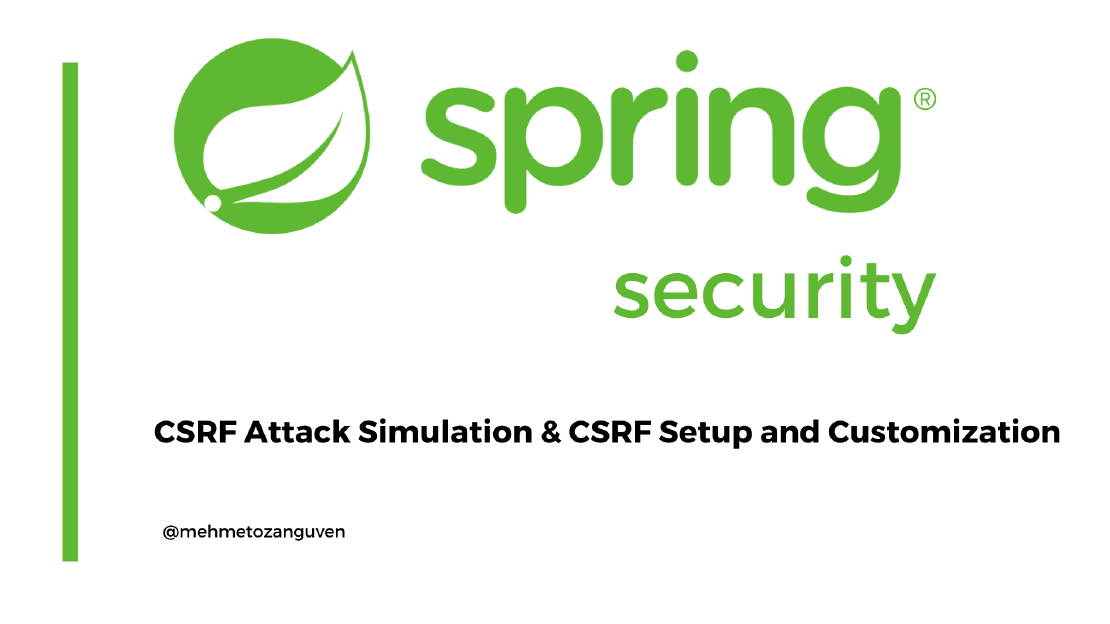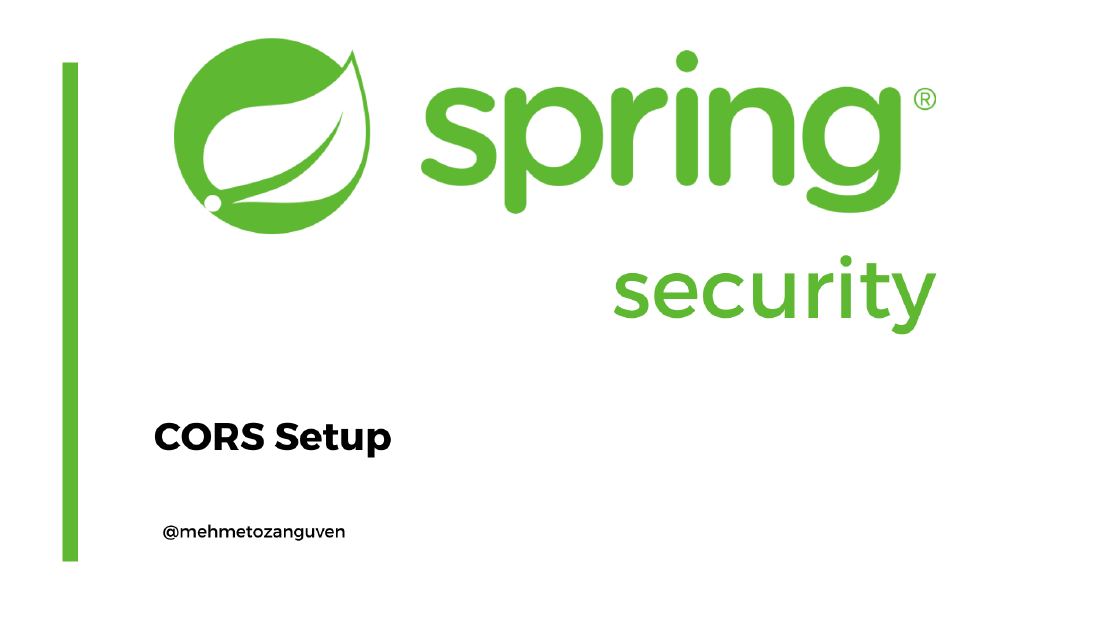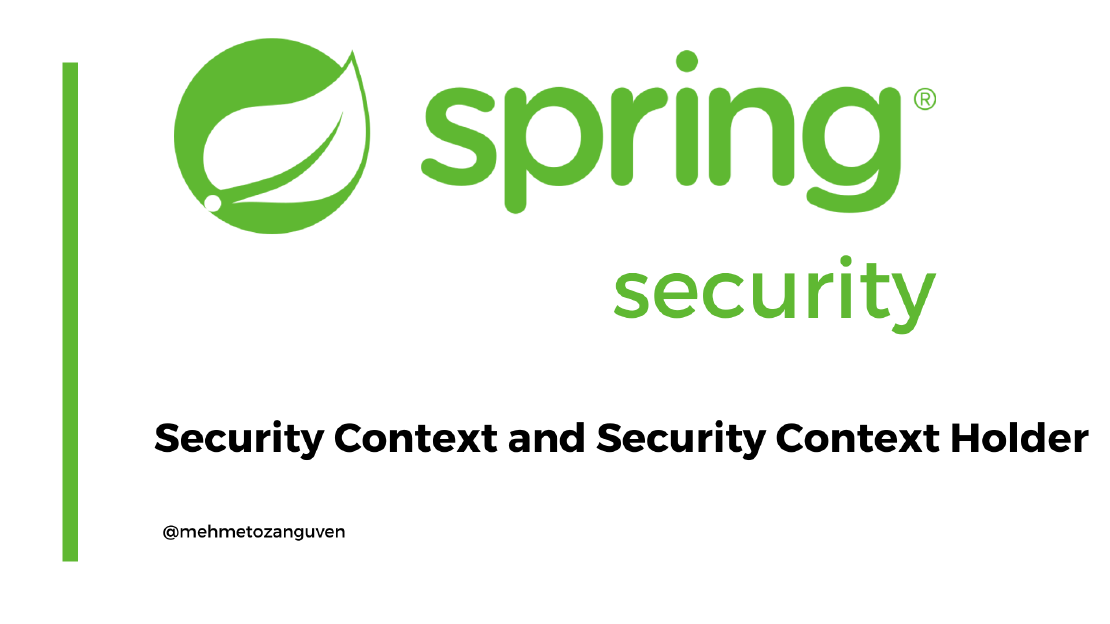In this post, let’s find out what is the CORS policy, how to implement in the Spring Boot and Spring Security, finally how to resolve most common error Access-Control-Allow-Origin => Missing
Github Link
If you only need to see the code, here is the github link
What is the CORS?
Cross-Origin Resource Sharing (CORS) is a protocol that enables scripts running on a browser client to interact with resources from a different origin.
We need this policy, because XMLHttpRequest and fetch follows the same-origin-policy and that leads JavaScript can only make calls to URLs that lives on the same origin where the script is running.
First let’s define what do we mean by different origin?
What do we mean by different origin?
Two origins are different if they have:
- different schemes (
HTTP OR HTTPS)
- different domains (
sample.com VS api.sample.com VS another.com)
- different ports (
sample.com:8081 VS sample.com:8080)
Why do we need a Cors policy ?
In generally speaking, your web application should never interact with resources from a different origin. However today web application structure, you will mostly have an backend and frontend which are running on different ports. Therefore you somehow guarantee the communication between two sides.
Web browsers can use headers related to CORS to determine whether or not an fetch call should continue or fail
There are a few headers, but most important one is the Access-Control-Allow-Origin which tells browsers to allow that origin to access the resource
- Example:
Access-Control-Allow-Origin: * => if your back-end application runs on the domain called api.sample.com than this header says that every other origin can access the api.sample.com resources. For instances, web browsers that run scripts on the domains sample.com or another.com can access(make request) to your domain: api.sample.comAccess-Control-Allow-Origin: http://sample.com => only the web browsers that run scripts on the domain http://sample.com can make request to your domain.
Be carefully as a developer you are not responsible to make request, web browser will decide it.
How CORS works ?
- Cors works by adding new Http Headers that let servers describe which origins are permitted to read that information from a web browser.
Be careful, it says … from a web browser . That’s means you can send a curl request to the server ? Right !!
What do we mean by Simple Requests ?
For more detail explanation, please refer to the https://developer.mozilla.org/en-US/docs/Web/HTTP/CORS#simple_requests
A “simple request” is one that meets all the following conditions:
-
One of the allowed methods:
- GET
- HEAD
- POST (with limited content-types)
-
Except for the headers automatically set by the user agent (such as Connection, User-Agent), the only headers, which are allowed to be manually set, are considered as simple request:
- Accept
- Accept-Language
- Content-Language
- Content-Type (but only allowed ones)
In other words, even if you match with allowed methods, content-type, and other conditions, if there is an header except the ones above (and also except the ones that are automatically set by the user agent), then it will be not be considered as simple request
Basically that’s means if you send POST request with content-type application/json, web browsers will think that your request is not a simple request
-
No ReadableStream object is used in the request
-
If you send request with XMLHttpRequest and if you do any of the following one, then your request will not be considered as simple request:
- If you register an event listener for the object returned by
XMLHttpRequest.upload
You will understand better when we are working on spring boot application.
Project Setup
To simulate CORS, first create a simple spring boot project. This project will contain the following dependencies:
- Spring Web
- Spring Security
- Thymeleaf
Create home page controller and corresponding html pages inside resources/templates
@Controller
public class HomePageController {
@GetMapping
public String homePage() {
return "homePage";
}
@PostMapping("/post")
@ResponseBody
public String ajaxRequest() {
return "AJAX_RESPONSE_FROM_SPRING";
}
}
<!DOCTYPE html>
<html lang="en">
<head>
<meta charset="UTF-8" />
<title>HomePage</title>
</head>
<body>
<h1>Home Page</h1>
<p id="ajaxResponse"></p>
<script>
async function getData(url) {
var response = await fetch(url, { method: "POST" });
var result = await response.text();
var ajaxResponse = document.getElementById("ajaxResponse");
ajaxResponse.innerHTML = result;
}
const url = "http://localhost:8080/post";
getData(url);
</script>
</body>
</html>
- For this sample project, I will disable the CSRF protection (don’t do this in production)
- And also I will allow all request to be accessed without login.
@Component
public class SecurityConfiguration extends WebSecurityConfigurerAdapter {
@Override
protected void configure(HttpSecurity http) throws Exception {
http.csrf().disable();
http.authorizeRequests().anyRequest().permitAll();
}
}
Getting Response From the Same Origin
After run the project, you will see the AJAX_RESPONSE_FROM_SPRING in the page. Because you are in the same origin as the web application
Error: Access-Control-Allow-Origin => Missing
Instead of opening the http://localhost:8080/, open the http://127.0.0.1:8080/. In the web console you will encounter the error like this one:
Cross-Origin Request Blocked: The Same Origin Policy disallows reading the remote resource at http://localhost:8080/post. (Reason: CORS header ‘Access-Control-Allow-Origin’ missing).
You will see this response, because you are sending request in different origin and fetch API blocks the response
Open the network tab when you are sending request from 127.0.0.1, and find your post request. Here is the my request’s header:
POST /post HTTP/1.1
Host: localhost:8080
User-Agent: Mozilla/5.0 (X11; Fedora; Linux x86_64; rv:88.0) Gecko/20100101 Firefox/88.0
Accept: */*
Accept-Language: en-US,tr;q=0.7,en;q=0.3
Accept-Encoding: gzip, deflate
Referer: http://127.0.0.1:8080/
Origin: http://127.0.0.1:8080
Connection: keep-alive
Pragma: no-cache
Cache-Control: no-cache
Content-Length: 0
Please look at the origin field. This field says that request was generated from the origin http://127.0.0.1:8080
Now look at the response’s headers:
HTTP/1.1 200
X-Content-Type-Options: nosniff
X-XSS-Protection: 1; mode=block
Cache-Control: no-cache, no-store, max-age=0, must-revalidate
Pragma: no-cache
Expires: 0
X-Frame-Options: DENY
Content-Type: text/plain;charset=UTF-8
Content-Length: 25
Date: Thu, 13 May 2021 10:37:44 GMT
Keep-Alive: timeout=60
Connection: keep-alive
As you can see, Spring did not return any header(s) related to the CORS (such Access-Control-Allow-Origin), which Spring basically tells the browsers:
- Hey browsers when a script makes a request, then show the response, if and only if that request was made from the origin
http://localhost:8080, otherwise blocks the response.
Be careful it blocks the response, that doesn’t mean browser also blocks the request(s).
In other words, cors doesn’t do anything about the call of the endpoint
CORS doesn’t do anything about the call of the endpoint
Update the post method and send the ajax request from the origin http:127.0.0.1 :
package com.mehmetozanguven.springsecuritycorssetup.controller;
import org.springframework.stereotype.Controller;
import org.springframework.web.bind.annotation.GetMapping;
import org.springframework.web.bind.annotation.PostMapping;
import org.springframework.web.bind.annotation.ResponseBody;
@Controller
public class HomePageController {
// ..
@PostMapping("/post")
@ResponseBody
public String ajaxRequest() {
System.out.println("Method called");
return "AJAX_RESPONSE_FROM_SPRING";
}
}
Even browser says ..Cross-Origin Request Blocked: The Same Origin Policy.. , look at the console of the spring application:
2021-05-13 13:57:04.718 INFO 67306 --- [nio-8080-exec-1] o.s.web.servlet.DispatcherServlet : Initializing Servlet 'dispatcherServlet'
2021-05-13 13:57:04.725 INFO 67306 --- [nio-8080-exec-1] o.s.web.servlet.DispatcherServlet : Completed initialization in 7 ms
Method called
That’s means endpoint was actually called. Therefore CORS:
Does not do anything related to call of the endpoint. It just blocks the response to be accessed
Does not protect the mutation operation. In our case POST endpoint (mutation operation) was actually called, therefore something in the web application will be updated (database, cache etc ..)
How to resolve Access-Control-Allow-Origin => Missing Error
There are many ways to resolve this error. I will just show two of them.
NOTE: Please use one of the method, do not implement the both.
CORS support through Spring Security
@Component
public class SecurityConfiguration extends WebSecurityConfigurerAdapter {
@Bean
public CorsFilter corsFilter() {
UrlBasedCorsConfigurationSource source = new UrlBasedCorsConfigurationSource();
CorsConfiguration corsConfiguration = new CorsConfiguration();
corsConfiguration.setAllowedHeaders(List.of("*"));
corsConfiguration.setAllowedOrigins(Arrays.asList("*"));
corsConfiguration.setAllowedMethods(Arrays.asList("*"));
corsConfiguration.setMaxAge(Duration.ofMinutes(10));
source.registerCorsConfiguration("/**", corsConfiguration);
return new CorsFilter(source);
}
@Override
protected void configure(HttpSecurity http) throws Exception {
http.csrf().disable();
http.authorizeRequests().anyRequest().permitAll();
http.cors(); // add this line;
}
}
CORS Setup through MVC Application
Create a WebMvcConfigurer bean
@Component
public class SecurityConfiguration extends WebSecurityConfigurerAdapter {
@Bean
public WebMvcConfigurer corsConfigurer() {
return new WebMvcConfigurer() {
@Override
public void addCorsMappings(CorsRegistry registry) {
registry.addMapping("/**").allowedOrigins("*");
}
};
}
@Override
protected void configure(HttpSecurity http) throws Exception {
http.csrf().disable();
http.authorizeRequests().anyRequest().permitAll();
}
}


